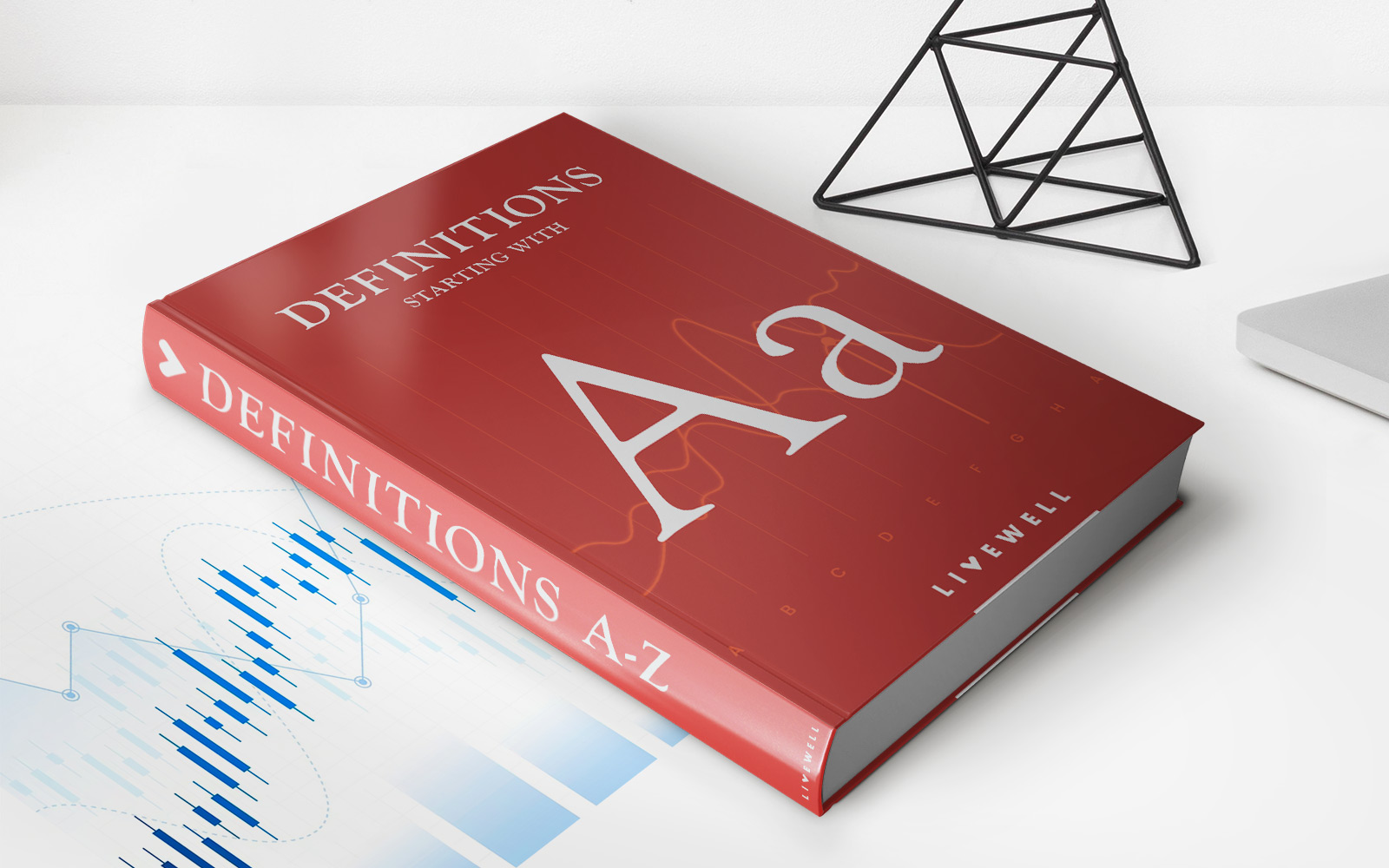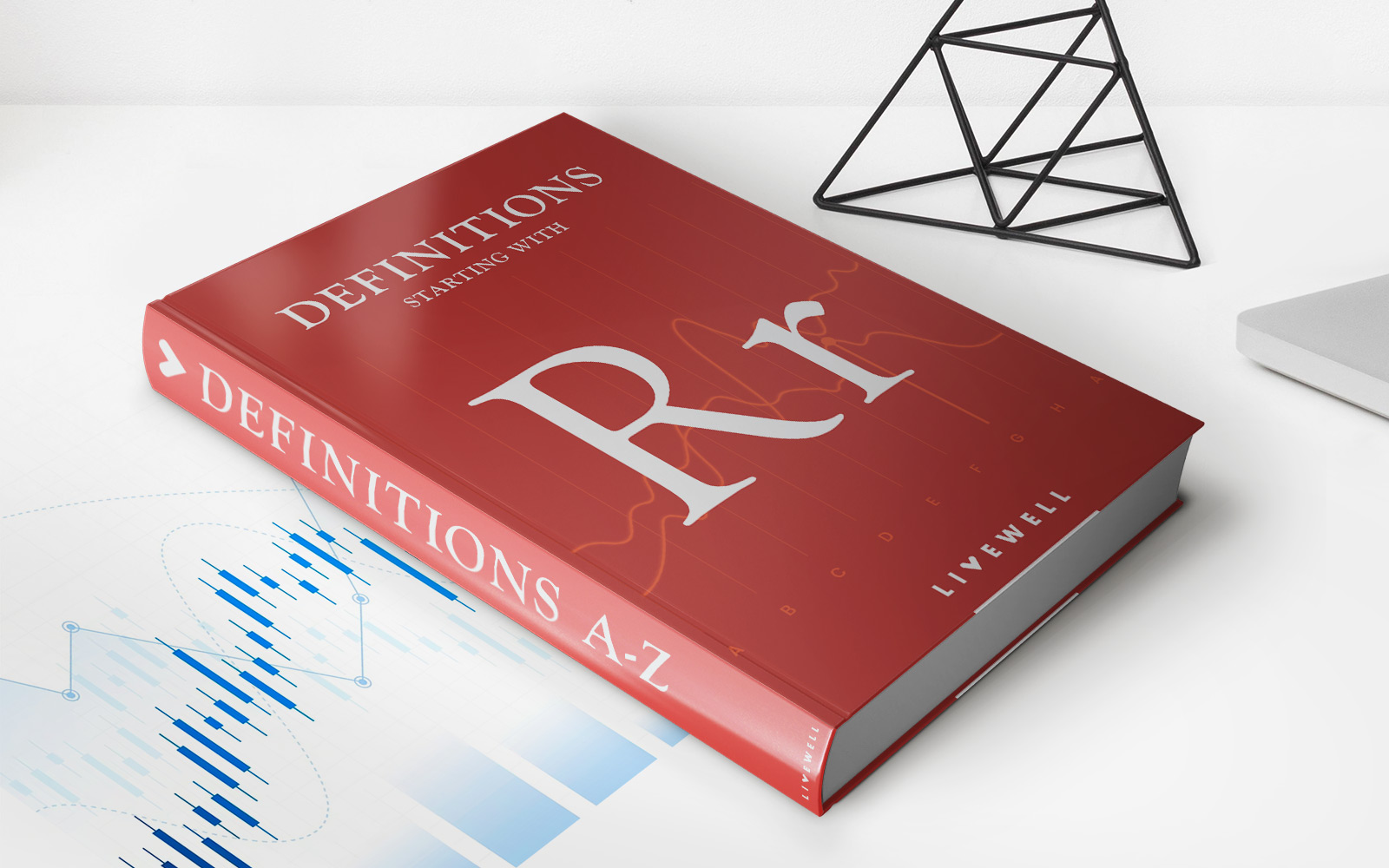

Finance
Which Student Loan Sould I Pay Off First?
Modified: February 21, 2024
Find out how to prioritize your student loan repayments and make the best financial decision. Learn which student loan to pay off first to save money and reduce your debt.
(Many of the links in this article redirect to a specific reviewed product. Your purchase of these products through affiliate links helps to generate commission for LiveWell, at no extra cost. Learn more)
Table of Contents
- Introduction
- Evaluating Your Student Loans
- Understanding Interest Rates
- Assessing Loan Terms and Conditions
- Identifying Loan Forgiveness Programs
- Prioritizing Loans Based on Interest Rates
- Prioritizing Loans Based on Loan Forgiveness Programs
- Considering Loan Balances
- Weighing the Impact on Credit Score
- Creating a Repayment Strategy
- Conclusion
Introduction
When it comes to managing student loans, one question that often arises is, “Which student loan should I pay off first?” With the increasing burden of student loan debt, it’s important to have a strategic approach to pay off your loans effectively and efficiently.
Evaluating your student loans and prioritizing their repayment can be a challenging task. There are several factors to consider, such as interest rates, loan terms and conditions, potential loan forgiveness programs, and your overall financial situation. In this article, we will guide you through the process of determining which student loan you should prioritize for repayment.
Understanding the different aspects of your loans will enable you to make informed decisions and create a repayment strategy tailored to your needs. By strategically tackling your student loans, you can save money in interest payments and expedite your journey to becoming debt-free.
Before diving into the specifics of prioritizing your loans, it’s crucial to have a clear understanding of the terms and conditions of each loan. This includes familiarizing yourself with the interest rates, repayment options, and any potential loan forgiveness programs that may be available to you.
By taking the time to evaluate your loans and consider your options, you can structure your repayment plan in a way that makes the most sense for your financial goals.
Evaluating Your Student Loans
Before you can determine which student loan to prioritize, it’s essential to evaluate and assess your overall student loan situation. Start by gathering all the necessary information about your loans, including the outstanding balances, interest rates, and repayment terms.
Make a comprehensive list of your loans, including both federal and private loans. Include details such as the lender, loan type, interest rate, and monthly payment amount. This will help you have a clear overview of your loan portfolio.
Next, consider the specific terms and conditions of each loan. Are there any flexible repayment options or deferment options available? Familiarize yourself with the repayment plans for each loan, including the length of the repayment period and any potential loan forgiveness programs.
Understanding the interest rates on your loans is crucial. Loans with higher interest rates will cost you more in the long run, so it’s important to prioritize paying off these loans first. Higher interest rates can significantly impact the total amount you repay over the life of the loan.
Additionally, analyze the repayment terms for each loan. Some loans may have longer repayment periods, meaning you will be paying interest for a more extended period. Others may offer shorter repayment periods, resulting in higher monthly payments but lower overall interest costs.
Consider your overall financial situation and budget. Calculate how much you can realistically afford to allocate towards student loan repayment each month. This will help you determine how much extra you can put towards paying off specific loans.
Lastly, take note of any potential loan forgiveness programs available to you. Loan forgiveness programs can be a game-changer, as they offer opportunities to have a portion of your student loans forgiven based on specific criteria, such as working in a public service field or making consistent on-time payments for a certain number of years.
By carefully evaluating your student loans and considering these factors, you will be better equipped to prioritize your loans effectively and create a repayment plan that aligns with your financial goals.
Understanding Interest Rates
When it comes to prioritizing your student loans, understanding the role of interest rates is crucial. The interest rate on a loan is the extra amount you pay for borrowing money, expressed as a percentage of the total loan amount.
To begin, identify the interest rates on each of your loans. Sort them in descending order, from highest to lowest interest rate. Loans with higher interest rates will accumulate more interest over time, making them more expensive to pay off in the long run.
Higher interest rates can significantly impact the total amount you repay over the life of the loan. By focusing on paying off high-interest loans first, you can reduce the overall amount of interest you’ll end up paying.
For example, let’s say you have a loan with a 6% interest rate and another with a 4% interest rate. By paying off the loan with the 6% interest rate first, you’ll save more money in interest compared to if you had focused on the loan with the 4% interest rate.
However, it’s important to consider the balance of each loan as well. If a high-interest loan has a significantly lower balance than a lower-interest loan, it might be more beneficial to focus on paying off the higher balance loan first. This is because interest is calculated based on the outstanding balance.
Furthermore, some loans may have variable interest rates, meaning they can fluctuate over time. Variable interest rates can add uncertainty to your repayment plan, as the monthly payments may change. In such cases, it’s wise to prioritize paying off these loans sooner to mitigate the potential impact of rising interest rates.
On the other hand, if you have loans with similar interest rates, it may be more practical to prioritize paying off the loan with the higher balance. By reducing the larger loan balance, you’ll also reduce the amount of interest that accrues over time.
Understanding the impact of interest rates on your loans will help you make informed decisions about the order in which to pay off your student loans. By strategically prioritizing high-interest loans and considering the balance of each loan, you can minimize the overall cost of borrowing and move closer to achieving financial freedom.
Assessing Loan Terms and Conditions
As you prioritize your student loans for repayment, it’s essential to assess the terms and conditions of each loan. These terms and conditions can have a significant impact on your repayment strategy and overall financial well-being.
Start by reviewing the repayment options available for each loan. Some loans may offer flexible repayment plans, such as income-driven repayment (IDR) plans. These plans adjust your monthly payments based on your income and family size, ensuring that your payments remain affordable. If you have a loan with a favorable IDR plan, it may be worth considering paying off other loans with less flexible repayment options first.
Loan forbearance and deferment options are also important to consider. These options allow you to temporarily pause or reduce your loan payments under certain circumstances, such as unemployment or economic hardship. If you have loans that offer these options, it may give you some flexibility in prioritizing other loans for repayment.
Another factor to consider is the presence of grace periods. Some loans provide a grace period after graduation, during which no payments are required. If you still have loans in the grace period, it might be wise to focus on paying off other loans that are already accruing interest.
Loan consolidation or refinancing is another option to explore. Consolidating your loans combines multiple loans into one, simplifying the repayment process. Refinancing involves replacing your current loans with a new loan that may have better terms, such as a lower interest rate. However, it’s important to carefully evaluate the potential benefits and drawbacks of consolidation or refinancing before proceeding.
Additionally, consider any potential loan forgiveness programs that may be available to you. Federal loan forgiveness programs, such as Public Service Loan Forgiveness (PSLF), can offer substantial relief by forgiving a portion of your loan balance after meeting specific criteria, such as working in a qualifying public service job for a certain number of years. If you anticipate qualifying for loan forgiveness, it may affect your prioritization strategy.
Finally, be aware of any prepayment penalties or fees associated with your loans. Some loans impose penalties for early repayment, which can impact your decision to prioritize them. It’s important to factor in these additional costs when assessing the overall benefits of paying off specific loans sooner.
By carefully assessing the terms and conditions of your student loans, you can make informed decisions about which loans to prioritize for repayment. Taking into account repayment options, forbearance and deferment options, grace periods, consolidation or refinancing opportunities, loan forgiveness programs, and any additional fees or penalties, you can develop a repayment strategy that aligns with your financial goals and maximizes the benefits of each loan’s terms.
Identifying Loan Forgiveness Programs
One important factor to consider when prioritizing your student loans for repayment is the availability of loan forgiveness programs. These programs can provide significant relief by forgiving a portion or even the entire balance of your student loans, depending on certain qualifying criteria.
The first step in identifying loan forgiveness programs is to determine whether you have federal or private student loans. Loan forgiveness programs are primarily available for federal loans, so it’s crucial to understand the type of loans you have and their eligibility for forgiveness.
One of the most well-known federal loan forgiveness programs is the Public Service Loan Forgiveness (PSLF) program. This program offers loan forgiveness to individuals who work in qualifying public service jobs, such as government or nonprofit organizations, and make consistent, on-time payments for a specified period of time, typically 10 years. If you work in a public service field and anticipate meeting the program’s requirements, it may be advantageous to prioritize loans eligible for PSLF, as the potential loan forgiveness can significantly reduce your overall debt burden.
Another federal loan forgiveness program is Teacher Loan Forgiveness. This program offers loan forgiveness to teachers who work in low-income schools or educational service agencies. The amount forgiven varies depending on the subject taught and the years of service. If you are a teacher, assessing your eligibility for this program is crucial in determining the prioritization of your loans.
Additional federal loan forgiveness options include forgiveness for those in the military, forgiveness for borrowers with disabilities, and forgiveness through income-driven repayment (IDR) plans. Each program has specific criteria and requirements, so it’s important to research and analyze your eligibility for these programs to inform your decision-making process.
It’s worth noting that private student loans generally do not offer forgiveness programs to the same extent as federal loans. However, some private lenders may provide loan forgiveness or repayment assistance programs for borrowers facing financial hardship. It’s important to contact your private loan servicer to inquire about any available programs or options.
When identifying loan forgiveness programs, it’s crucial to consider the potential impact on your repayment strategy. If you anticipate qualifying for loan forgiveness through a specific program, it may be beneficial to prioritize other loans for repayment first, as the forgiven amount can significantly reduce your overall debt burden.
Keep in mind that loan forgiveness programs can be subject to changes in legislation and eligibility criteria. It’s essential to stay informed about any updates or developments in these programs to make informed decisions about prioritizing your loans for repayment.
By identifying the loan forgiveness programs available to you and assessing your eligibility, you can determine the potential benefits and impact on your repayment strategy. Combining loan forgiveness programs with other factors like interest rates and loan balances will allow you to prioritize your loans effectively and work towards becoming debt-free.
Prioritizing Loans Based on Interest Rates
When determining which student loan to pay off first, one effective strategy is to prioritize your loans based on their interest rates. By focusing on high-interest loans, you can minimize the overall amount of interest you’ll pay over time and potentially save money in the long run.
To begin, gather information on the interest rates for each of your loans. Sort them in descending order from highest to lowest interest rate.
Start by paying the minimum monthly payments on all your loans to ensure you are meeting your obligations. Then, allocate any extra funds you have towards the loan with the highest interest rate.
By paying more than the minimum payment on the loan with the highest interest rate, you’ll reduce the principal balance faster and ultimately lower the amount of interest that accrues. Once you’ve paid off the loan with the highest interest rate, move on to the next loan with the next highest interest rate, and continue the process until all your loans are repaid.
Keep in mind that as you pay off loans with higher interest rates, your remaining loans may become more manageable to repay. This is because the higher-interest loans tend to accumulate interest at a faster rate than lower-interest loans.
However, it’s important to also consider the balance of each loan. If a high-interest loan has a significantly lower balance than other loans, it might be more practical to focus on paying off the loan with the higher balance first. This is because interest is calculated based on the outstanding balance, and focusing on the loan with the higher balance can mitigate the impact of interest accumulation over time.
Balancing the interest rates and loan balances is key to effectively prioritizing your loans. It’s important to strike a balance between reducing high-interest debt and addressing loans with larger balances.
Additionally, be diligent about avoiding late or missed payments, as these can result in penalties and negatively impact your credit score. Make sure to set up automatic payments or establish reminders to ensure you stay on top of your loan repayment.
By strategically targeting your loans based on their interest rates, you can minimize the amount of interest you pay over time and make progress towards becoming debt-free more efficiently. Having a clear repayment plan can provide focus and motivation as you work towards financial freedom.
Prioritizing Loans Based on Loan Forgiveness Programs
Another important factor to consider when prioritizing your student loans for repayment is the availability of loan forgiveness programs. Loan forgiveness can significantly reduce or eliminate your loan balance, depending on specific qualifying criteria. By prioritizing loans eligible for forgiveness, you can take advantage of these programs and potentially save a substantial amount of money.
Start by researching and understanding the loan forgiveness programs that you may qualify for. Federal loan forgiveness programs, such as Public Service Loan Forgiveness (PSLF) or Teacher Loan Forgiveness, are designed to forgive a portion or all of your loan balance if you meet certain requirements.
If you work in a qualifying public service job, such as government or non-profit organizations, the PSLF program may be available to you. By making consistent, on-time payments for a specified period, typically 10 years, you may be eligible to have the remaining balance of your federal loans forgiven.
Similarly, if you are a teacher or educator, you may qualify for Teacher Loan Forgiveness. This program offers loan forgiveness to teachers who work in low-income schools or educational service agencies for at least five consecutive years.
By prioritizing loans eligible for forgiveness programs, you can strategically allocate your resources. Make minimum payments on all loans, but focus any additional funds on loans that are not eligible for forgiveness or have a lower likelihood of being forgiven.
Consider the potential amount of forgiveness available through each program and compare it to the outstanding balance of your loans. Prioritize loans with higher balances and lower chances of forgiveness, as these loans are likely to benefit the most from extra payments.
It’s important to note that loan forgiveness programs often have specific requirements and conditions. Ensure that you understand the eligibility criteria and stay informed about any updates or changes to the programs. Keep track of the necessary documentation and follow the guidelines to ensure that you meet all the requirements for loan forgiveness.
There may also be certain timelines or qualifying periods that you need to fulfill to become eligible for forgiveness. Be aware of these deadlines and plan your repayment strategy accordingly.
Keep in mind that loan forgiveness programs are subject to future changes in legislation. Ensure that you regularly review the terms and conditions of these programs to remain well-informed and adjust your repayment strategy as necessary.
By prioritizing loans based on their eligibility for loan forgiveness programs, you can take advantage of opportunities to have a portion or all of your loan balance forgiven. This strategic approach can help you save money and reach your goal of becoming debt-free sooner.
Considering Loan Balances
When prioritizing your student loans for repayment, considering the loan balances is an important factor to take into account. While interest rates and eligibility for loan forgiveness programs are crucial, the overall balance of each loan will also play a significant role in determining which loans to prioritize.
Start by assessing the outstanding balance of each loan. Sort them from highest to lowest balance to get a clear picture of your debt load. Loans with higher balances may require more of your financial resources to pay off, and paying off these loans first can provide a sense of accomplishment and motivation as you see significant progress in reducing your overall debt.
One strategy is to focus on paying off loans with smaller balances first. This is known as the “debt snowball” method. By paying off smaller loans quickly, you can build momentum and move on to tackling larger loans. This approach may provide a sense of achievement and psychological satisfaction, motivating you to continue the repayment process.
On the other hand, the “debt avalanche” method involves prioritizing loans with the highest interest rates. By targeting loans with higher interest rates, you can save more money on interest over the long term. If the loans with higher balances also have high-interest rates, it may be more prudent to focus on those loans first, as reducing high-interest debt can have a significant impact on your overall financial well-being.
Consider your own personal financial situation and resources when examining loan balances. If you can comfortably make larger payments towards loans with higher balances, it may make sense to prioritize those loans. However, if you have limited financial resources, focusing on loans with smaller balances allows you to eliminate individual loans more quickly, which can provide a sense of progress and relief.
It’s important to strike a balance between considering loan balances and other factors, such as interest rates and eligibility for loan forgiveness programs. You may choose to prioritize loans with a combination of high balances, high interest rates, and low chances of forgiveness. This way, you can make significant progress in paying off your debt while also minimizing the overall interest paid.
Remember, the ultimate goal is to become debt-free, so consider what approach will keep you motivated and encourage consistent repayment. If paying off loans with higher balances first provides a sense of accomplishment, it may be the right strategy for you. Alternatively, if saving money on interest is your primary focus, prioritizing loans with higher interest rates may be the better approach.
By considering loan balances in combination with other factors, you can develop a repayment plan that aligns with your individual financial goals and sets you on the path to financial freedom.
Weighing the Impact on Credit Score
As you prioritize your student loans for repayment, it’s crucial to consider the potential impact on your credit score. Your credit score plays a significant role in your financial well-being and can affect your ability to secure future loans, obtain favorable interest rates, and even rent an apartment or land a job.
One of the key factors that contribute to your credit score is your payment history. Making on-time payments on your loans demonstrates responsible financial behavior and helps build a positive credit history. Therefore, it’s important to ensure that you make at least the minimum required payments on all your loans to avoid any negative impact on your credit score.
When deciding which loans to prioritize for repayment, consider the potential consequences of falling behind on payments. If you have loans with higher balances or loans with higher interest rates, it may be tempting to focus solely on those. However, neglecting other loans and allowing them to become delinquent or defaulting on them can severely damage your credit score and make it difficult to recover.
Additionally, paying off loans in a strategic manner can positively impact your credit utilization ratio. This ratio measures how much of your available credit you are currently using. By paying off loans and reducing your overall debt, you can lower your credit utilization ratio, which can enhance your creditworthiness in the eyes of lenders.
It’s worth noting that loan forgiveness programs may also impact your credit score. Some forgiveness programs require you to make a certain number of on-time payments before qualifying for forgiveness. Meeting these payment requirements can positively contribute to your payment history and, in turn, boost your credit score.
Alternatively, loan consolidation or refinancing can also impact your credit score. When you consolidate or refinance your loans, a new loan is created, and the old loans are paid off. This can affect the average age of your credit accounts and the number of accounts you have, potentially influencing your credit score.
However, it’s important to emphasize that the impact on your credit score should be considered secondary to the overall goal of becoming debt-free. While maintaining a good credit score is important, it should not be the sole determining factor in prioritizing your loans for repayment.
Develop a repayment strategy that strikes a balance between paying off high-interest loans, managing loan balances, and maintaining a positive credit history. By making consistent, on-time payments and being mindful of your credit score, you can achieve your goal of becoming debt-free while still protecting and building a strong credit profile.
Creating a Repayment Strategy
Creating a repayment strategy is essential for effectively managing your student loans and making progress towards becoming debt-free. A well-thought-out strategy can help you stay organized, motivated, and in control of your financial situation. Here are some steps to consider when developing your repayment plan:
1. Assess Your Financial Situation: Begin by evaluating your current income, expenses, and overall financial health. Determine how much you can comfortably allocate towards student loan payments each month without straining your budget.
2. Set Clear Goals: Define your financial goals and timeline. Consider whether you want to pay off your loans as quickly as possible or if you prefer a more balanced approach. Determine your target payoff date and work towards achieving that goal.
3. Prioritize Your Loans: Review the factors discussed earlier, such as interest rates, loan forgiveness programs, loan balances, and the impact on your credit score. Based on your analysis, prioritize your loans for repayment. Consider using the debt avalanche or snowball method to streamline your strategy.
4. Increase Your Monthly Payments: Whenever possible, try to pay more than the minimum monthly payment. By increasing the amount you pay each month, you can accelerate the repayment process and reduce the overall interest you’ll pay over time. Even small additional payments can make a significant difference in the long run.
5. Consider Income-Driven Repayment Plans: If your monthly loan payments are a significant burden, look into income-driven repayment (IDR) plans. These plans calculate your monthly payment based on your income and family size, making them more affordable in relation to your financial situation.
6. Explore Refinancing and Consolidation Options: If you have multiple loans or high-interest rates, consider refinancing or consolidating your student loans. This involves obtaining a new loan to pay off your existing loans, potentially with better interest rates or repayment terms. However, carefully evaluate the pros and cons of these options before making a decision.
7. Automate Your Payments: Setting up automatic payments ensures that you never miss a due date and helps you avoid late fees or negative impacts on your credit score. Automating your payments also makes it easier to stay consistent and disciplined with your repayment strategy.
8. Make Sacrifices and Adjustments: Consider making lifestyle adjustments to save money and allocate more funds towards loan repayment. Cut back on unnecessary expenses, look for ways to increase your income, and be mindful of your spending habits. Small sacrifices can make a notable difference in your ability to pay off your loans faster.
9. Seek Professional Help: If you’re feeling overwhelmed or unsure about the best repayment strategy for your situation, consider seeking guidance from a financial advisor or loan counselor. They can provide personalized advice and guidance tailored to your specific needs and circumstances.
Remember that everyone’s financial situation is unique, so it’s important to design a repayment strategy that aligns with your goals and capabilities. Continuously assess and adjust your plan as needed, and celebrate milestones along the way. With a well-defined repayment strategy, discipline, and determination, you can successfully eliminate your student loan debt and achieve greater financial freedom.
Conclusion
Navigating the repayment of student loans can be a daunting task, but with careful consideration and a well-crafted strategy, you can effectively manage your debt and work towards becoming debt-free. By evaluating your loans, understanding interest rates, loan terms, and potential loan forgiveness programs, you can prioritize your repayments in a way that aligns with your financial goals.
Whether you choose to prioritize loans based on interest rates, loan forgiveness programs, loan balances, or a combination of factors, it’s important to create a repayment plan that suits your unique circumstances. Consider your financial situation, credit score, and desired timeline for becoming debt-free.
Strive to make consistent, on-time payments and, when possible, allocate extra funds towards paying off your loans. This will help you reduce the overall interest you pay over time and accelerate your progress towards loan repayment.
Additionally, understanding the impact on your credit score is crucial. While it’s important to prioritize loan repayment, you should also be mindful of maintaining a positive credit history and avoiding any potential negative impacts on your credit score. Striking the right balance between these factors is key.
Lastly, remain flexible and adaptable throughout the repayment process. Circumstances may change, and it’s important to regularly reassess and adjust your strategy as needed. Seek professional guidance if necessary, and stay motivated by celebrating milestones and progress along the way.
Remember, paying off your student loans is a journey, but with careful planning and determination, you can navigate it successfully. By developing a clear repayment strategy that takes into account interest rates, loan forgiveness opportunities, loan balances, credit score impact, and your financial priorities, you can take control of your student loan debt and pave the way to a brighter financial future.














